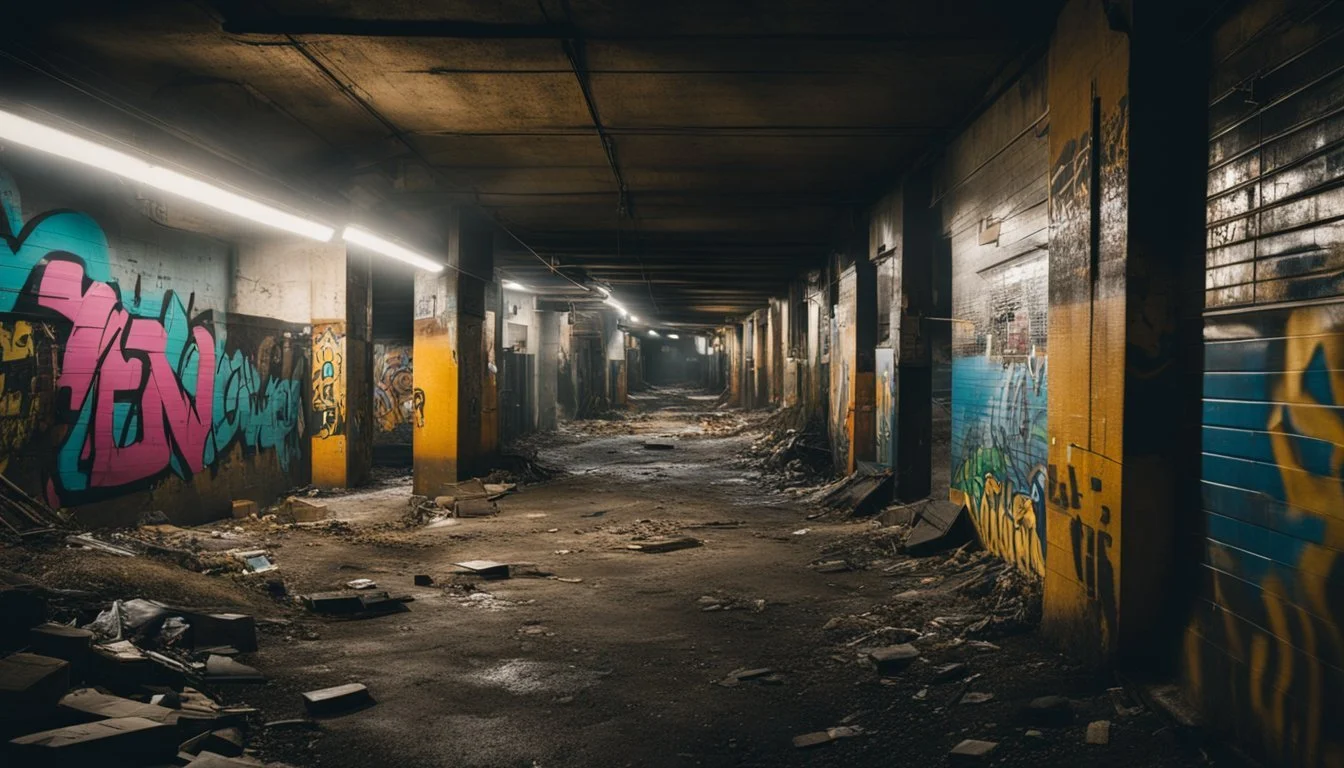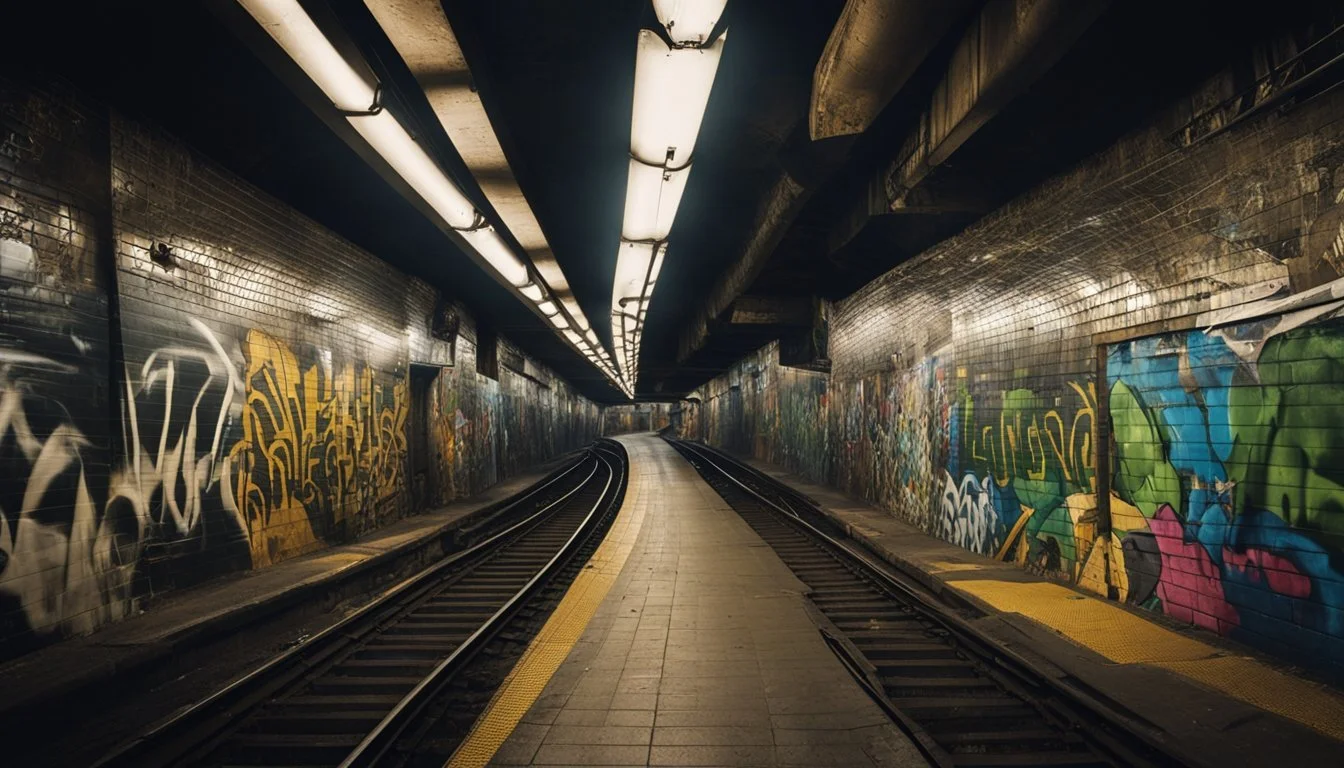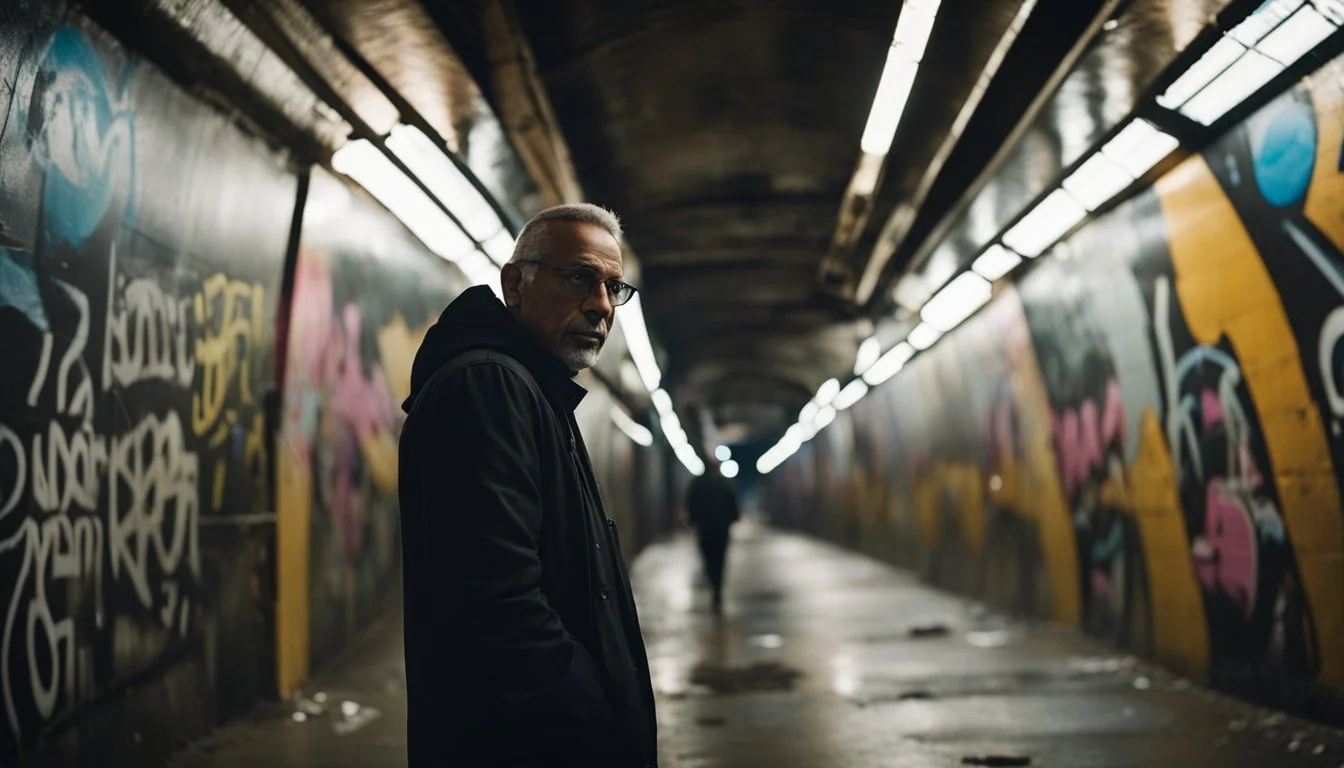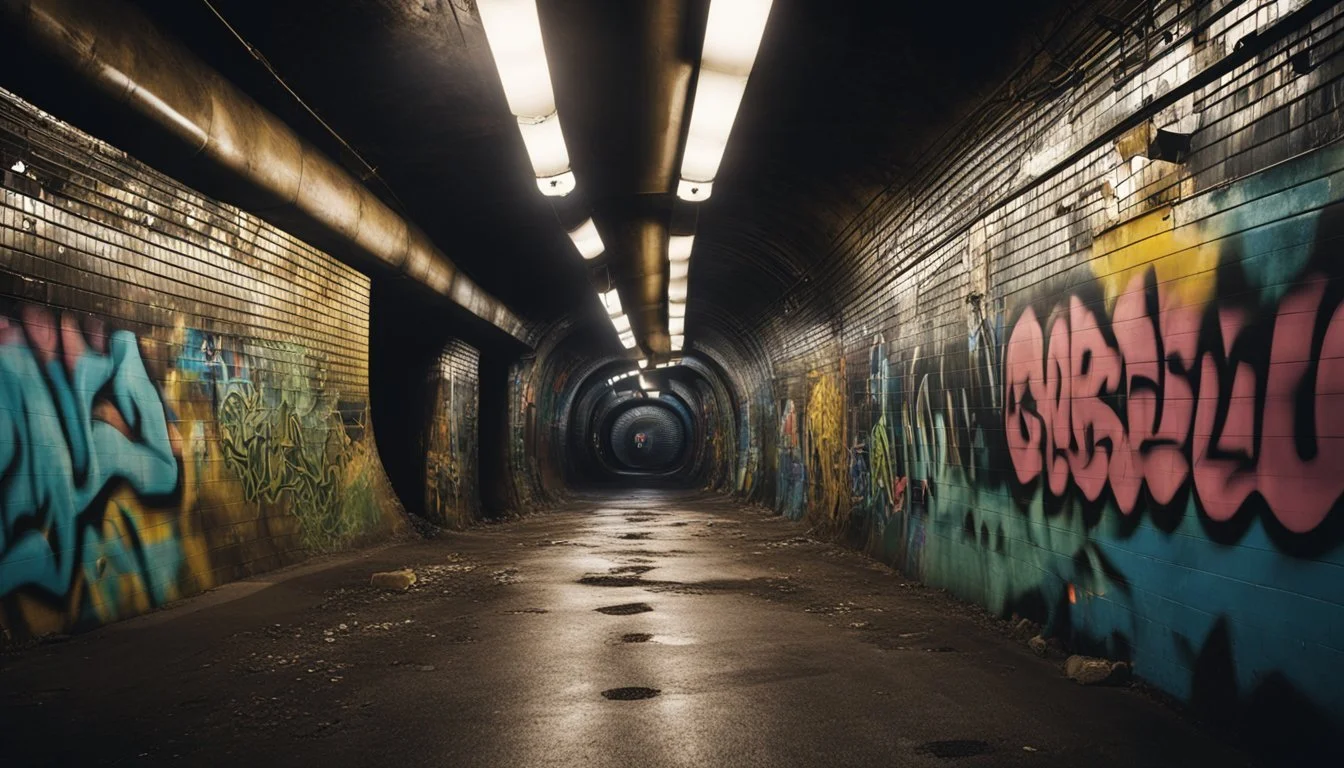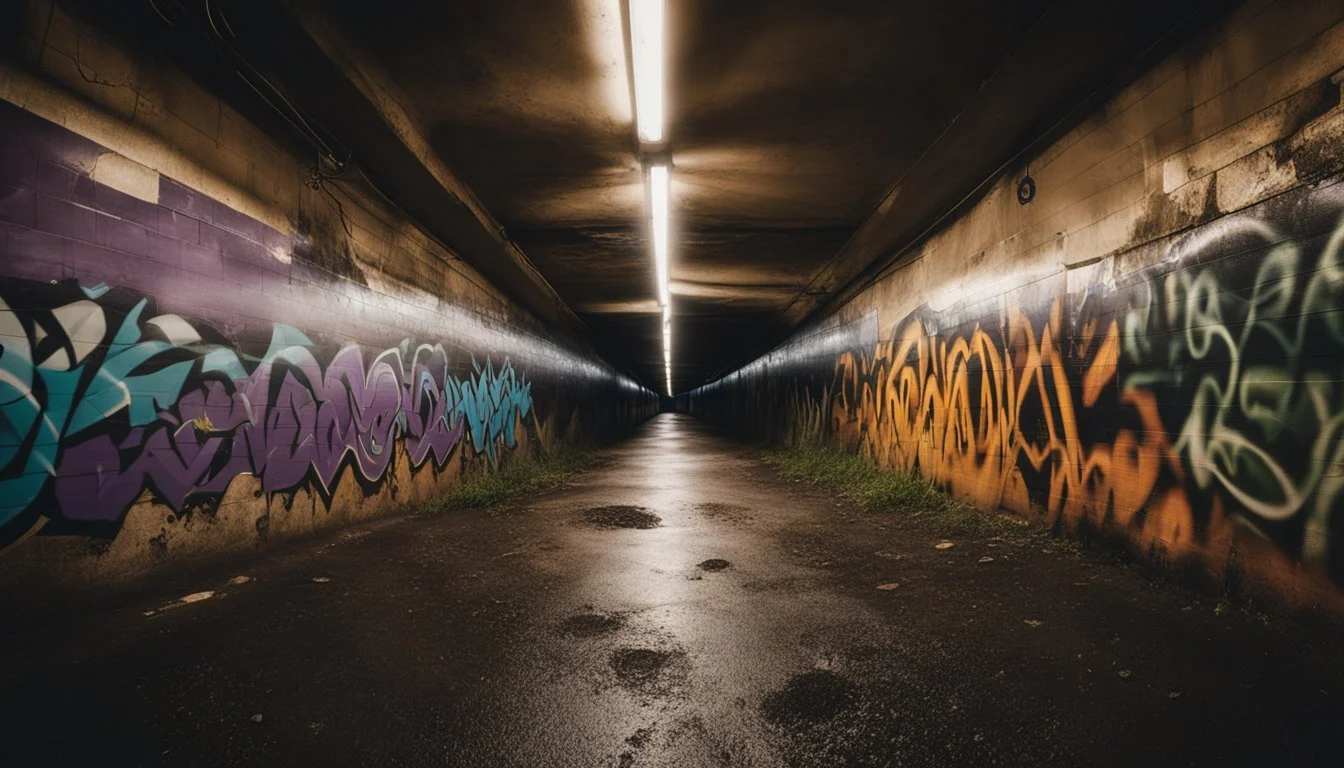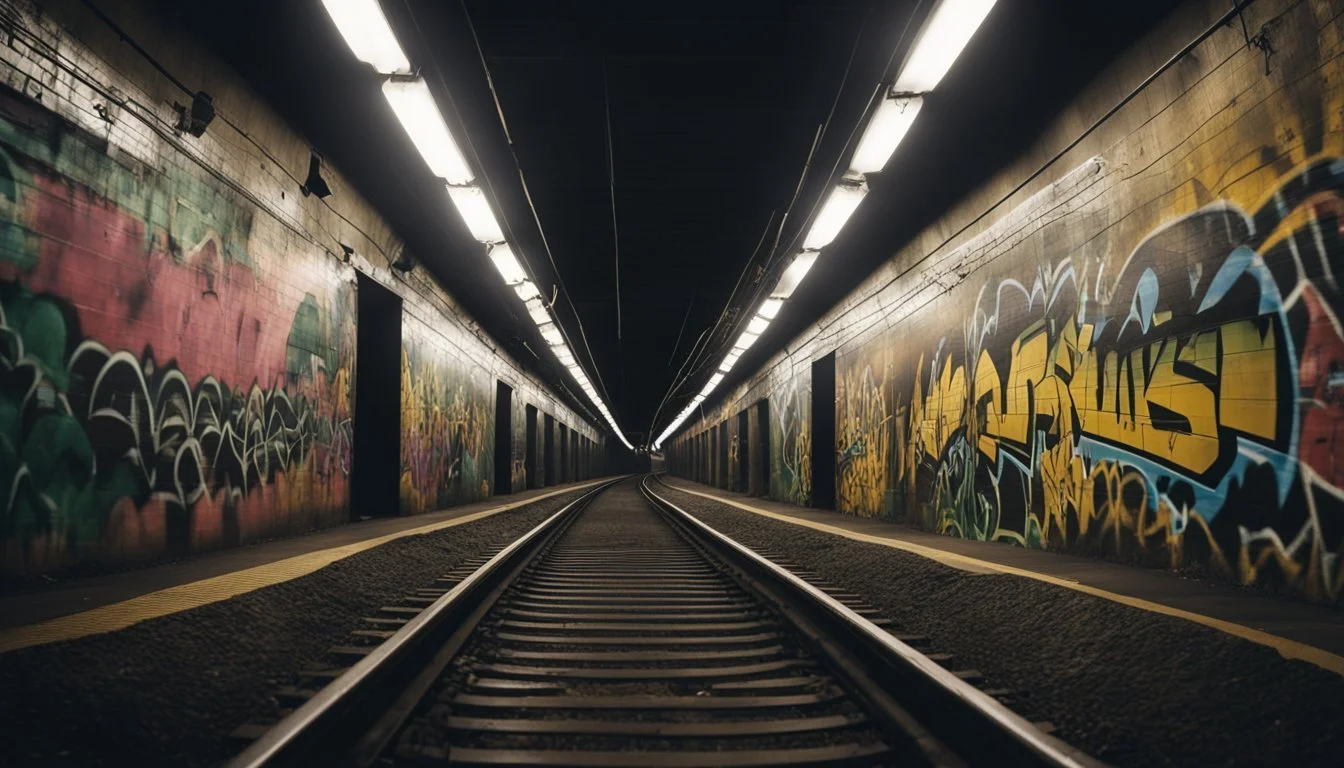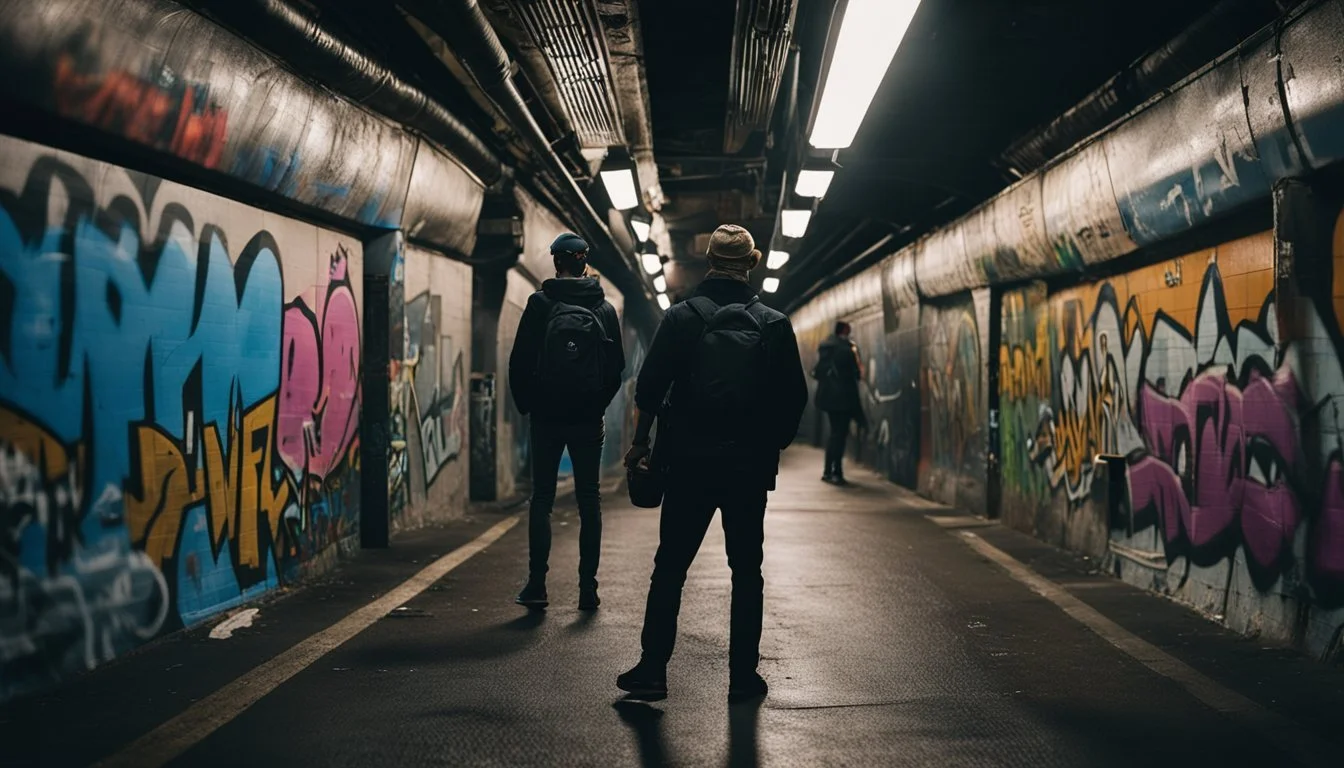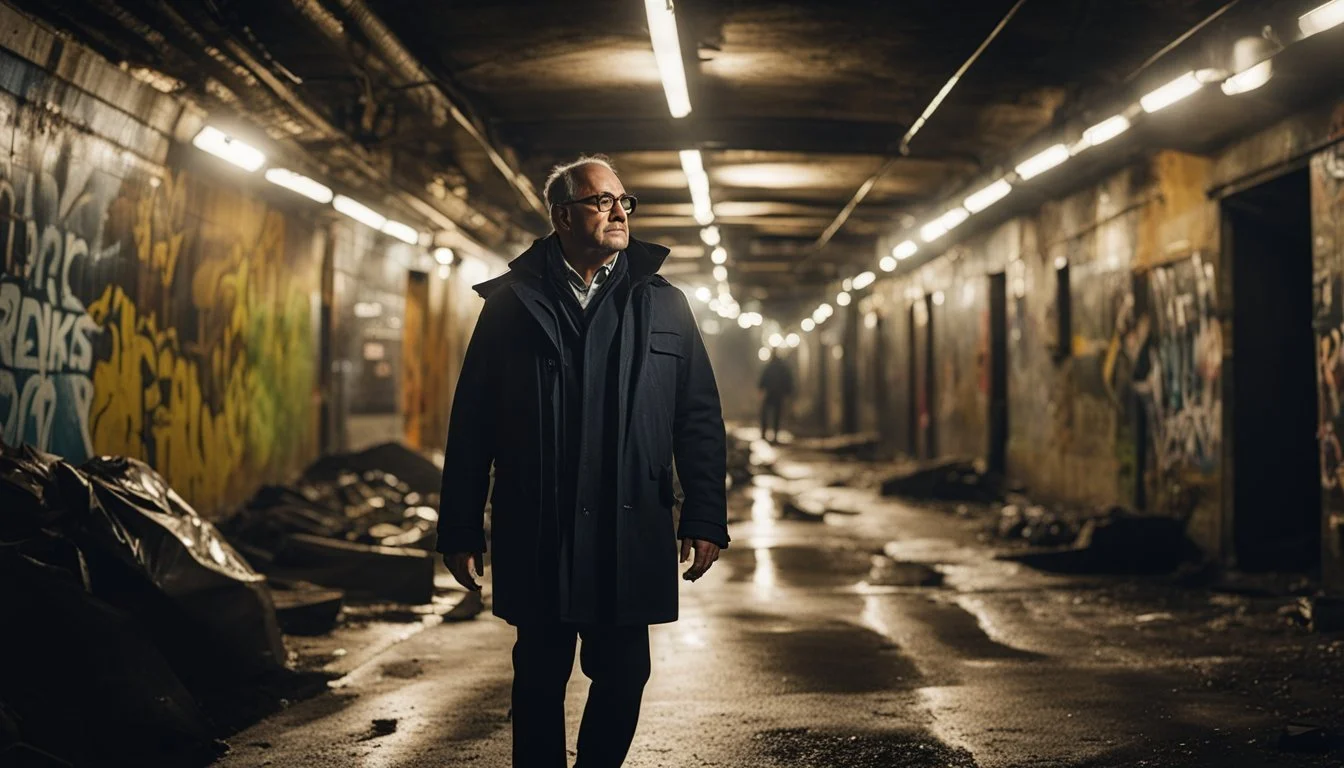Dark Days Director Immerses Himself in New York Underground for Documentary
In 2000, director Marc Singer released "Dark Days," a groundbreaking documentary that captured the lives of New York City's homeless population living in abandoned subway tunnels. Singer's approach to filmmaking was unconventional and deeply immersive. He spent months living alongside his subjects in the Freedom Tunnel, gaining their trust and documenting their daily struggles with unflinching authenticity.
The film offered a rare glimpse into an underground world largely hidden from public view. Singer's dedication to his craft went beyond mere observation. He learned to navigate the pitch-black tunnels, adapted to the harsh living conditions, and formed genuine connections with the community he was documenting.
Singer's immersive approach resulted in a raw and intimate portrayal of life beneath the streets of New York. The black-and-white cinematography and haunting soundtrack by DJ Shadow enhanced the gritty atmosphere of the underground dwellings. "Dark Days" not only shed light on a marginalized community but also challenged viewers' perceptions of homelessness and urban survival.
The Evolution of Independent Film
Independent cinema has transformed the film landscape, offering unique voices and innovative storytelling. This evolution has been particularly evident in key cultural hubs and prestigious festivals.
Rise in New York City
New York City became a breeding ground for independent filmmakers in the 1960s and 1970s. The city's gritty urban backdrop provided the perfect canvas for character-driven narratives. Filmmakers like John Cassavetes and Martin Scorsese emerged, pushing boundaries with raw, authentic storytelling.
New York's independent scene flourished through underground screenings and small theaters. The rise of 16mm cameras made filmmaking more accessible, allowing artists to capture the city's diverse stories. This period saw the birth of iconic indie films like "Shadows" and "Mean Streets," which challenged Hollywood norms.
Influence of Cannes and Sundance
The Cannes Film Festival and Sundance Film Festival played crucial roles in elevating independent cinema to global recognition. Cannes introduced the "Un Certain Regard" section in 1978, showcasing innovative and daring works from emerging filmmakers.
Sundance, founded in 1978, became the premier platform for American independent films. It launched careers of directors like Quentin Tarantino and Steven Soderbergh. The festival's Palme d'Or equivalent, the Grand Jury Prize, brought indie films to mainstream attention.
These festivals created a bridge between independent filmmakers and wider audiences. They provided crucial exposure and distribution opportunities, helping indie films compete with big-budget productions.
Crafting the Narrative
The narrative of "Dark Days" emerged through Singer's immersive experience and collaboration with the underground community. This unique approach shaped both the story's authenticity and its emotional resonance.
Role of the Writer
Marc Singer took on multiple roles in crafting "Dark Days." As director and writer, he lived among the homeless community for months, building trust and gathering stories. This firsthand experience allowed him to capture authentic voices and perspectives.
Singer's writing process was unconventional. He didn't start with a traditional script. Instead, he let the narrative evolve organically from his interactions and observations. This method resulted in a raw, unfiltered portrayal of life underground.
The writer's role extended beyond mere documentation. Singer had to balance respect for his subjects with the need to create a compelling story. He carefully selected which aspects of their lives to highlight, ensuring privacy while revealing universal truths.
Plot Development
The plot of "Dark Days" unfolded naturally through Singer's immersion in the community. Key events and character arcs emerged from real-life situations rather than being predetermined.
Singer focused on several main characters, each representing different facets of homeless life. Their individual stories intertwined to create a larger narrative about survival, community, and humanity.
The film's structure followed a loose chronological order, punctuated by thematic segments. These segments explored topics like daily routines, personal histories, and dreams for the future.
Singer incorporated moments of conflict and resolution to drive the plot forward. These included tensions within the community and struggles against external forces like authorities and harsh weather conditions.
The Director's Vision
A director's vision shapes the entire filmmaking process, from conceptualization to final edit. It encompasses creative interpretation, artistic choices, and leadership strategies that bring a unique perspective to life on screen.
Interpreting Reality
Directors often immerse themselves in the world they aim to portray. For "Dark Days," the director lived among New York's underground community to capture authentic experiences. This approach echoes Stanley Kubrick's meticulous research for films like "Full Metal Jacket."
Directors translate real-life observations into compelling narratives. They decide which aspects of reality to highlight or downplay, creating a cinematic truth that may differ from literal reality.
The director's interpretation guides actors' performances, set design, and narrative structure. It ensures a cohesive story that resonates with audiences while staying true to the director's intended message.
Aesthetic Choices
Visual style is a crucial component of a director's vision. Todd Haynes, known for his distinct aesthetics, carefully selects color palettes, lighting, and camera angles to evoke specific emotions and themes.
Directors collaborate with cinematographers and production designers to create a unique visual language. This might involve:
Choosing between handheld or steady cam shots
Deciding on a color scheme that reflects the story's mood
Selecting locations that enhance the narrative
Sound design and music also play vital roles in realizing a director's vision. These elements can dramatically alter the audience's perception of scenes and characters.
The director's aesthetic choices ultimately create a cohesive visual and auditory experience that supports the story's themes and emotional core.
Cinematic Techniques
Director Marc Singer employed innovative cinematic techniques to capture life in New York's underground tunnels for "Dark Days". His approach blended raw authenticity with artistic vision, creating a powerful visual and auditory experience.
Sound and Music
Singer utilized natural sounds from the underground environment to immerse viewers in the world of tunnel dwellers. The rumble of passing trains and echoes of dripping water formed an organic soundtrack. Minimal music was added, allowing the ambient noise to speak for itself.
The film's audio captured hushed conversations and solitary moments, revealing the intimate reality of life below the streets. This unfiltered soundscape heightened the documentary's gritty realism and emotional impact.
Capture of Movement
Singer's camera work emphasized fluid movement through the dark, confined spaces. He employed handheld techniques to follow subjects closely, creating a sense of intimacy and immediacy.
Low-angle shots highlighted the imposing tunnel architecture, while close-ups revealed subtle facial expressions in dim lighting. Time-lapse sequences showed the ebb and flow of tunnel life over extended periods.
The director's innovative use of makeshift dolly tracks, constructed from found materials, allowed for smooth tracking shots through the narrow passageways. This DIY approach aligned with the resourcefulness of the tunnel residents themselves.
Postmodern Narratives
Postmodern narratives challenge traditional storytelling conventions and reflect the fragmented nature of contemporary culture. These innovative approaches blur boundaries between reality and fiction, often incorporating metafictional elements and diverse cultural perspectives.
Breaking Conventional Forms
Postmodern narratives disrupt linear storytelling and conventional plot structures. Authors experiment with fragmented timelines, multiple narrators, and unreliable perspectives. They may incorporate diverse media forms, such as found documents, emails, or social media posts.
Metafiction is a common technique, where the narrative draws attention to its own artificiality. Characters might address the reader directly or comment on the writing process itself. This self-reflexivity encourages readers to question the nature of storytelling and reality.
Intertextuality plays a significant role, with texts referencing or borrowing from other works. This creates a web of connections, challenging the idea of originality and highlighting the interconnectedness of cultural productions.
Cultural Commentary
Postmodern narratives often serve as vehicles for cultural critique. They examine the role of media, technology, and consumerism in shaping contemporary society. Authors may use satire or parody to comment on social issues, political systems, or cultural trends.
These narratives frequently explore themes of identity, questioning fixed notions of self and emphasizing the fluid, constructed nature of personal and cultural identities. They may address issues of race, gender, and sexuality, highlighting the complexities of these constructs in modern society.
Postmodern works often blur the lines between "high" and "low" culture, incorporating elements from popular media alongside literary references. This approach challenges traditional hierarchies and reflects the eclectic nature of contemporary cultural consumption.
Setting the Scene
New York City's underground provided a raw, gritty backdrop for "Dark Days." The director immersed himself in this hidden world, capturing its essence through careful observation and interaction.
Nurturing Atmosphere
The director spent months living alongside the underground dwellers. This prolonged exposure allowed him to absorb the unique atmosphere of their subterranean homes. He experienced firsthand the darkness, dampness, and constant rumble of trains overhead.
These sensory details infused the film with authenticity. The camera work mirrored the claustrophobic tunnels, using tight shots and low angles. Sound design incorporated the ambient noises of dripping water and distant echoes.
Embracing the Locale
Manhattan's underbelly became more than just a backdrop; it was a character in its own right. The director explored abandoned subway platforms and forgotten maintenance corridors. He documented the makeshift living spaces carved out of concrete alcoves.
This approach echoed earlier New York-centric films like "Taxi Driver," which used the city's gritty locales to enhance storytelling. The underground setting provided a stark contrast to the bustling streets above, highlighting social inequalities.
The director's immersive technique allowed him to portray this hidden community with empathy and depth. His intimate knowledge of the environment shines through in every frame of "Dark Days."
Behind the Scenes
The making of "Dark Days" involved intricate planning, unique challenges, and intense on-location filming. Key players navigated complex production issues while immersing themselves in New York's underground world.
The Role of the Producer
Producers played a crucial part in bringing "Dark Days" to life. They secured funding, managed logistics, and coordinated with various stakeholders. Their efforts bridged the gap between the filmmakers' vision and practical realities.
The producers worked tirelessly to obtain necessary permits for filming in restricted underground areas. They negotiated with city officials and transit authorities to gain access to these spaces.
Producers also handled the delicate task of building trust with the underground community. This involved extensive outreach and ensuring ethical treatment of all participants.
Challenges of Production
Filming "Dark Days" presented numerous obstacles. The low-light conditions of the underground tunnels required specialized equipment and innovative lighting techniques.
Sound recording proved difficult due to echoes and ambient noise from passing trains. The production team had to develop creative solutions to capture clear audio.
Safety concerns were paramount. The crew faced risks from unstable structures, poor air quality, and potential encounters with dangerous individuals.
Budget constraints forced the filmmakers to be resourceful. They often relied on minimal crew and equipment, adapting their approach to the unique environment.
On-Site Filming Realities
The production team spent months in New York's underground, immersing themselves in the daily lives of the tunnel dwellers. This prolonged exposure allowed for authentic storytelling but took a toll on the crew's physical and mental well-being.
Filming often occurred during odd hours to capture the true rhythm of underground life. The team had to be flexible, sometimes waiting hours for the right moment to shoot a scene.
Building relationships with the subjects was crucial. The filmmakers had to balance their roles as observers with the need to gain trust and access to personal stories.
The unpredictable nature of the environment meant that the crew had to be prepared for anything. They often captured unplanned moments that became integral to the film's narrative.
The Audience Engagement
"Dark Days" captivated audiences through its raw portrayal of New York's underground dwellers. The film's immersive approach blurred lines between documentary and experiential cinema, leaving a lasting impact on viewers and the cultural landscape.
Theaters vs. Streaming
Theatrical releases of "Dark Days" provided a communal viewing experience that enhanced audience engagement. The shared atmosphere of darkened cinemas mirrored the film's underground setting, creating a sense of collective immersion. Viewers reported feeling more connected to the subjects' struggles when watching in theaters.
Streaming platforms later expanded the film's reach. While offering convenience, home viewing potentially diminished some of the collective impact. However, it allowed for repeated viewings and pausing to reflect, enabling deeper analysis of the subjects' lives.
Regardless of viewing method, the film's stark black-and-white imagery and intimate interviews maintained its emotional resonance.
Cultural Impact
"Dark Days" sparked conversations about homelessness and urban poverty. Film festivals and academic institutions hosted screenings followed by discussions, extending the audience engagement beyond passive viewing.
The documentary influenced other filmmakers to pursue immersive storytelling techniques. Its success demonstrated the power of long-term embedding with subjects to capture authentic narratives.
Social workers and policymakers cited the film when advocating for improved homeless services. Some viewers reported changing their perceptions of underground communities, leading to increased empathy and volunteerism.
The film's lasting cultural impact is evident in its continued inclusion in documentary studies curricula and its frequent references in discussions about New York City's history and social issues.
Notable Personalities and Works
New York City has been a breeding ground for groundbreaking filmmakers and iconic productions. The city's gritty streets and diverse neighborhoods have inspired artists to push creative boundaries and explore unconventional themes.
Filmmaker Spotlights
Stanley Kubrick, born in the Bronx, made his mark with visually striking films that challenged societal norms. His early work "Killer's Kiss" captured the raw essence of 1950s New York.
Jack Smith, an avant-garde filmmaker, shocked audiences with his experimental approach. His controversial film "Flaming Creatures" became a cult classic in the underground scene.
Todd Haynes emerged as a prominent figure in New Queer Cinema. His debut feature "Poison" explored themes of sexuality and societal stigma, earning critical acclaim and cementing his status as a visionary director.
Iconic Productions
"The Velvet Underground," Lou Reed's influential band, embodied the spirit of New York's underground music scene. Their collaboration with Andy Warhol resulted in groundbreaking multimedia performances.
"Dog Day Afternoon," directed by Sidney Lumet, portrayed a true story of a Brooklyn bank robbery gone wrong. The film's gritty realism and Al Pacino's powerful performance captured the essence of 1970s New York.
"Safe," directed by Todd Haynes, starred Julianne Moore as a housewife grappling with environmental illness. The film's eerie atmosphere and social commentary showcased Haynes' unique storytelling abilities.
John Cassavetes' "Shadows" pioneered independent filmmaking in New York. Its improvisational style and exploration of racial themes set a new standard for authentic urban narratives.
The Impact of Externalities
Externalities shape the underground environment in New York City, influencing both the physical space and its inhabitants. These external factors create unique challenges and opportunities for those living below the surface.
Environmental Influences
Wind patterns in underground spaces can significantly affect air quality and temperature. Drafts from subway tunnels and ventilation systems circulate air, sometimes bringing fresh breezes but also potentially spreading pollutants.
Smoke inhalation poses a serious health risk in confined underground areas. Poor ventilation can trap harmful fumes, increasing the danger for inhabitants. Proper airflow systems are crucial to mitigate these risks.
The underground culture adapts to these environmental challenges. Residents develop strategies to cope with air quality issues and temperature fluctuations. They may create makeshift barriers or use fans to improve airflow.
Death rates in underground communities can be impacted by environmental factors. Extreme temperatures, air quality issues, and limited access to emergency services contribute to higher mortality risks compared to above-ground populations.
Educational Perspectives
The documentary "Dark Days" offers valuable insights for students and educators in film and social studies. Its unique approach to storytelling and subject matter provides rich material for academic exploration and discussion.
Filmmaking Academia
Film schools incorporate "Dark Days" into their curricula to teach documentary techniques and ethical considerations. Students analyze Singer's immersive approach, examining how he built trust with his subjects while maintaining objectivity. The film's stark black-and-white cinematography serves as a case study in visual storytelling.
Classes explore the challenges of filming in low-light underground environments. Technical workshops focus on Singer's innovative use of equipment and lighting solutions. Ethical debates center on the filmmaker's role in documenting marginalized communities.
Social science departments use "Dark Days" to spark discussions on urban poverty and homelessness. The film provides a firsthand look at an often-invisible segment of society, encouraging students to consider complex social issues.
Enduring Legacies
'Dark Days' left an indelible mark on documentary filmmaking and raised awareness of homelessness in New York City. The film's impact continues to resonate years after its release.
Tributes and Remembrance
'Dark Days' received critical acclaim and numerous awards, including the Sundance Film Festival's Audience Award. Its unflinching portrayal of life underground sparked conversations about urban poverty and social inequality.
The film inspired other documentarians to explore hidden communities and unconventional living situations. It influenced horror films and thrillers set in subterranean environments, such as 'C.H.U.D.' and 'Mimic'.
Museums and art galleries have featured photographs and artifacts from the production, preserving the memory of the tunnel dwellers. Academic studies continue to analyze the film's depiction of homelessness and its societal implications.
'Dark Days' remains a powerful testament to human resilience and creativity in the face of extreme adversity. Its legacy endures as a stark reminder of the invisible struggles faced by marginalized populations in urban centers.


